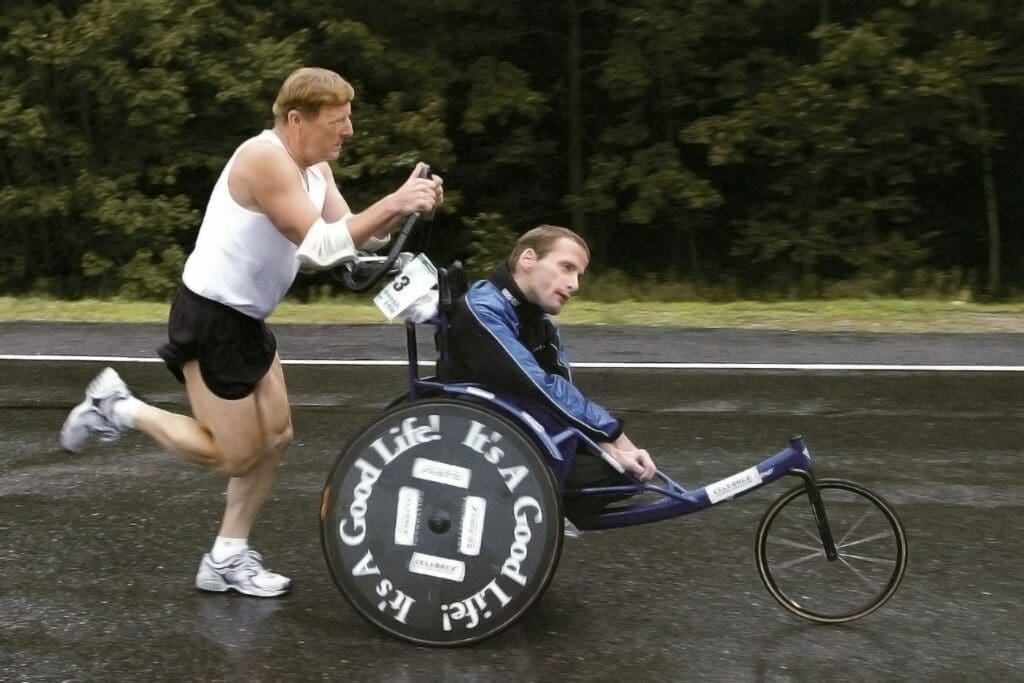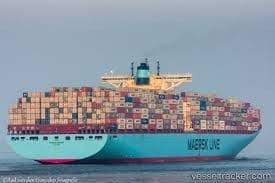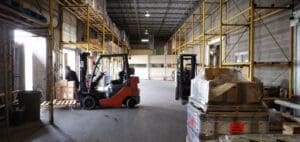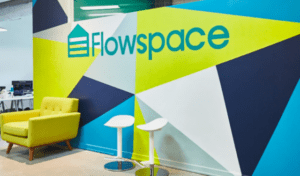 In April of 2005, just a month after completing my first half marathon (and vowing I would never run a full marathon in my life), I went to the finish line at the Boston Marathon and saw Team Hoyt for the first time. Team Hoyt consisted of father and son duo Dick and Rick Hoyt. Rick was born with cerebral palsy and in 1977 convinced his dad to push him in a 5 mile road race. This was despite his dad not being a runner. Dick agreed, they came in second to last, and the rest is inspirational history. Team Hoyt became a fixture at the Boston Marathon, completing the race 32 times, while running another 40 marathons as well. But running was not enough for the duo; they also finished 257 triathlons, including 6 Ironman distances. For those unaware of just how long the Ironman is, it consists of a 2.4 mile open water swim, 112 mile bike ride, and a marathon. Dick would pull Rick in a boat behind him for the swim and ride a special bike that carried Rick on front. When I saw Team Hoyt cross the finish line in 2005, I turned to my now-wife and said “I want to run next year.” And I did; we both did actually. Sadly, Dick Hoyt passed away on Wednesday at his home in Holland, MA. And now to this week’s logistics news.
In April of 2005, just a month after completing my first half marathon (and vowing I would never run a full marathon in my life), I went to the finish line at the Boston Marathon and saw Team Hoyt for the first time. Team Hoyt consisted of father and son duo Dick and Rick Hoyt. Rick was born with cerebral palsy and in 1977 convinced his dad to push him in a 5 mile road race. This was despite his dad not being a runner. Dick agreed, they came in second to last, and the rest is inspirational history. Team Hoyt became a fixture at the Boston Marathon, completing the race 32 times, while running another 40 marathons as well. But running was not enough for the duo; they also finished 257 triathlons, including 6 Ironman distances. For those unaware of just how long the Ironman is, it consists of a 2.4 mile open water swim, 112 mile bike ride, and a marathon. Dick would pull Rick in a boat behind him for the swim and ride a special bike that carried Rick on front. When I saw Team Hoyt cross the finish line in 2005, I turned to my now-wife and said “I want to run next year.” And I did; we both did actually. Sadly, Dick Hoyt passed away on Wednesday at his home in Holland, MA. And now to this week’s logistics news.
- US drug distributors urge govt to boost COVID-19 vaccine supply network
- UN plan would raise $5 billion from containership companies to stop emissions
- HelloFresh boxes sustainability
- Dropshipping is getting a second look
- Pandemic has ‘forever altered’ need for logistics space
- Washington farm exports crimped by cargo-container shortage
- Truck driver shortage varies by segment
- Flowspace raisese $31 million in new funding round
 As the country continues on its path toward herd immunity through vaccinations, many see the process as taking too long. Three major US drug distributors have requested the government to expand the COVID-19 vaccine supply chain network as the country strives to immunize its population against the novel coronavirus as quickly as possible. AmerisourceBergen Corp, Cardinal Health Inc, and Henry Schein Inc have urged officials to develop a plan of action aimed at identifying ways to move the vaccines safely and quickly to administrators and vaccination sites. The companies said the existing healthcare network, including pharmacies, doctors’ offices, hospitals, and other healthcare providers, will need to be activated to achieve herd immunity against the virus. With the third vaccine authorized, these manufacturers are pressing for more companies to be authorized to ship the vaccine.
As the country continues on its path toward herd immunity through vaccinations, many see the process as taking too long. Three major US drug distributors have requested the government to expand the COVID-19 vaccine supply chain network as the country strives to immunize its population against the novel coronavirus as quickly as possible. AmerisourceBergen Corp, Cardinal Health Inc, and Henry Schein Inc have urged officials to develop a plan of action aimed at identifying ways to move the vaccines safely and quickly to administrators and vaccination sites. The companies said the existing healthcare network, including pharmacies, doctors’ offices, hospitals, and other healthcare providers, will need to be activated to achieve herd immunity against the virus. With the third vaccine authorized, these manufacturers are pressing for more companies to be authorized to ship the vaccine.
 Global transportation is at the forefront of sustainability efforts. And while most people think of over the road trucking first, ocean freight is making waves. A coalition of countries is pitching a plan to the United Nations’ International Maritime Organization (IMO) to require global shipping companies to raise funds for an effort to deploy widescale fleets of zero-carbon emission cargo ships within a decade. The effort would raise $5 billion through “mandatory contributions” by containership companies in a push to decarbonize the maritime transport sector. The new approach would enable global maritime cargo carriers to reduce greenhouse gases enough to meet the IMO’s 2050 50 percent reduction and zero-carbon emissions goals.
Global transportation is at the forefront of sustainability efforts. And while most people think of over the road trucking first, ocean freight is making waves. A coalition of countries is pitching a plan to the United Nations’ International Maritime Organization (IMO) to require global shipping companies to raise funds for an effort to deploy widescale fleets of zero-carbon emission cargo ships within a decade. The effort would raise $5 billion through “mandatory contributions” by containership companies in a push to decarbonize the maritime transport sector. The new approach would enable global maritime cargo carriers to reduce greenhouse gases enough to meet the IMO’s 2050 50 percent reduction and zero-carbon emissions goals.
 Speaking of sustainability, HelloFresh meal kits are touting a better approach to sustainability. According to the company, inside the boxes are a highly efficient approach to sourcing, selling and packaging, backed by a corporate commitment to sustainability that is good for the business and even better for people and the planet. While HelloFresh is expected to detail those efforts and share specific goals in an annual sustainability report to be published in the next week, the company looks at sustainability across all aspects of its business. For example, when looking at food waste, HelloFresh buys food from the same pool producing items in grocery, noting that the direct model provides precise demand and proven recipes reduce waste in facilities and homes. The company is also exploring sustainable models for packaging, materials, and carbon emissions.
Speaking of sustainability, HelloFresh meal kits are touting a better approach to sustainability. According to the company, inside the boxes are a highly efficient approach to sourcing, selling and packaging, backed by a corporate commitment to sustainability that is good for the business and even better for people and the planet. While HelloFresh is expected to detail those efforts and share specific goals in an annual sustainability report to be published in the next week, the company looks at sustainability across all aspects of its business. For example, when looking at food waste, HelloFresh buys food from the same pool producing items in grocery, noting that the direct model provides precise demand and proven recipes reduce waste in facilities and homes. The company is also exploring sustainable models for packaging, materials, and carbon emissions.
One method of last mile deliveries that has seen an uptick in recent years is drop shipping. Drop shipping is where retailers have manufacturers ship items directly to the consumer rather than carrying them in their warehouse. As more sales move online, some wholesale retailers are taking steps to reduce the amount of inventory they own and are moving back to a drop shipping model. Foot Locker announced that it started piloting a new drop shipping program with its largest vendor, Nike last quarter, while Nordstrom said during an investor day last month that it plans to carry more products on a dropship basis going forward. According to my latest omni-channel research, more than 42 percent of respondents are using drop shipping to fulfill last mile deliveries.
 The research arm of San Francisco-based real estate investment trust Prologis Inc said in a report issued Wednesday the pandemic has “forever altered” the landscape for logistics real estate. According to the report, in 2020, global e-commerce penetration increased at a rapid rate, up 390 basis points, accounting for a full five years of adoption. E-commerce accounted for 20 percent of all retail sales last year compared to only 4 percent in 2011. E-commerce requires more than three times the space of traditional brick-and-mortar operations because all of the inventory sits in a warehouse. A large portion of merchandise in a retail store is kept on shelves. Also, online product menus have more variety and can experience greater volatility in sales, both requiring incremental space. According to the report, “the long-term structural growth rate of logistics real estate has risen as economic growth now requires more logistics real estate than in the past. Not surprisingly, the surge in e-commerce fulfillment is driving the change.” Prologis expects the share shift to e-commerce from brick-and-mortar to represent at least 125 million square feet of additional space required annually through 2025. That forecast only includes the US and Europe.
The research arm of San Francisco-based real estate investment trust Prologis Inc said in a report issued Wednesday the pandemic has “forever altered” the landscape for logistics real estate. According to the report, in 2020, global e-commerce penetration increased at a rapid rate, up 390 basis points, accounting for a full five years of adoption. E-commerce accounted for 20 percent of all retail sales last year compared to only 4 percent in 2011. E-commerce requires more than three times the space of traditional brick-and-mortar operations because all of the inventory sits in a warehouse. A large portion of merchandise in a retail store is kept on shelves. Also, online product menus have more variety and can experience greater volatility in sales, both requiring incremental space. According to the report, “the long-term structural growth rate of logistics real estate has risen as economic growth now requires more logistics real estate than in the past. Not surprisingly, the surge in e-commerce fulfillment is driving the change.” Prologis expects the share shift to e-commerce from brick-and-mortar to represent at least 125 million square feet of additional space required annually through 2025. That forecast only includes the US and Europe.
 The Covid-19 pandemic and ensuing cargo container shortage is affecting nearly every industry. Foreign buyers are eager for farm goods from Washington and other states but thanks to the strange effects of COVID-19 on global shipping, US farm exports are barely moving. Before the pandemic, truckers could pick up a newly emptied container at the port in a few hours and drive it back to Eastern Washington to fill with produce. These days, drivers can wait all day for a container, and in a few cases, they were told to “come back to tomorrow.” Those delays create additional and expensive backlogs at processing plants and packing sheds. The end result is tens of thousands of boxes of apples that should be on their way to the Middle East and Asia are piling up in warehouses instead.
The Covid-19 pandemic and ensuing cargo container shortage is affecting nearly every industry. Foreign buyers are eager for farm goods from Washington and other states but thanks to the strange effects of COVID-19 on global shipping, US farm exports are barely moving. Before the pandemic, truckers could pick up a newly emptied container at the port in a few hours and drive it back to Eastern Washington to fill with produce. These days, drivers can wait all day for a container, and in a few cases, they were told to “come back to tomorrow.” Those delays create additional and expensive backlogs at processing plants and packing sheds. The end result is tens of thousands of boxes of apples that should be on their way to the Middle East and Asia are piling up in warehouses instead.
The US truck driver shortage is hitting all segments equally hard, right? 3PL Coyote Logistics and partner analytics firm Emsi have released a new research report that takes a data-driven view of the current landscape. The summary concludes that there does seem to be systemic shortage of long haul drivers, but the situation is much better in the LTL and local delivery driver occupations. The report notes for heavy duty truck driver, it takes about nine job postings for each new hire. That includes LTL and local heavy duty trucking. The ratio is likely even higher jut for long haul drivers. What’s more, with an aging driver population, the workforce composition suggests that young workers are not being recruited at rates that will replace current drivers as they exit the market due to age or disability.
 On-demand warehousing, which allows shippers to bypass traditional warehouse leases and turn warehousing services on and off as needed, is continuing to gain traction. Flowspace, a provider of warehouse-on-demand software and services, has raised $31 million in a new round to expand its business and build on capabilities like predictive analytics to help retailers achieve fulfillment network optimization through precise fulfillment hub and inventory positioning. Flowspace’s cloud-based platform is used both by third-party logistics providers and other owners of commercial/industrial space who have excess capacity, and by brands looking for more flexibility in their fulfillment network model vs. signing long-term leases. Its network provides access to hundreds of fulfillment centers nationwide.
On-demand warehousing, which allows shippers to bypass traditional warehouse leases and turn warehousing services on and off as needed, is continuing to gain traction. Flowspace, a provider of warehouse-on-demand software and services, has raised $31 million in a new round to expand its business and build on capabilities like predictive analytics to help retailers achieve fulfillment network optimization through precise fulfillment hub and inventory positioning. Flowspace’s cloud-based platform is used both by third-party logistics providers and other owners of commercial/industrial space who have excess capacity, and by brands looking for more flexibility in their fulfillment network model vs. signing long-term leases. Its network provides access to hundreds of fulfillment centers nationwide.
That’s all for this week. Enjoy the weekend and the song of the week, Iron Man by Black Sabbath.
















